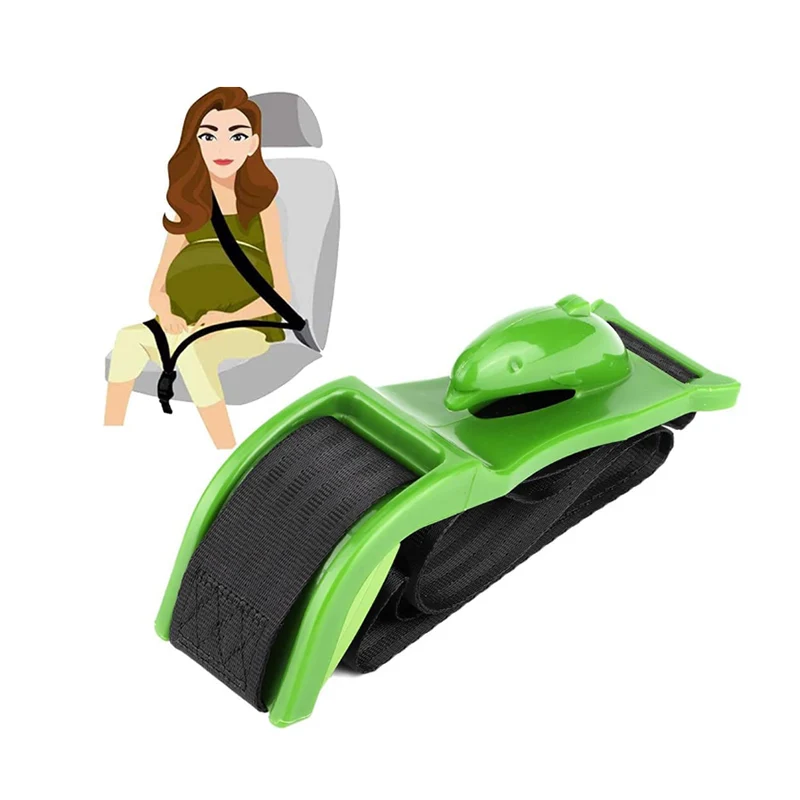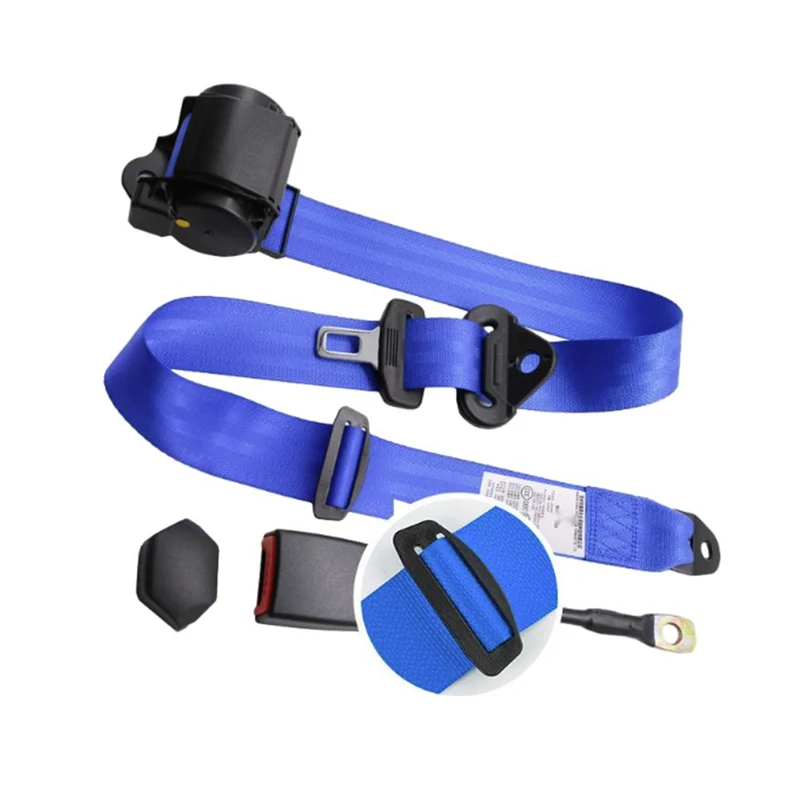Why Should You Always Buckle Up in the Back Seat
2025-10-10
I’ve been in the vehicle safety industry for over twenty years. If I had to pick one single thing that astonishes me to this day, it’s the number of people who still question the need for a seat belt in the back of a car. I’ve heard every excuse in the book. "I'm just going around the corner." "The trip is so short." "It's safer back here anyway."
Let me be perfectly clear. That line of thinking is not just a minor oversight; it’s a potentially fatal misconception. This isn't just corporate talking points; it's physics. So, let's tackle the biggest question head-on.
What Is the Real Danger of Not Buckling Up in the Back
When you're unbuckled in the back seat, you become a dangerous projectile in the event of a crash. Your body doesn't just gently slide forward; it gets launched at the same speed the car was traveling before impact. A sudden stop at just 30 mph can hurl you into the front seats, the dashboard, or the windshield with a force equivalent to several times your body weight.
This isn't only a risk to yourself. You pose a severe threat to everyone else in the vehicle. That force is enough to crush the driver or front-seat passenger, causing catastrophic injuries to them even if they are properly restrained. A rear-seat seat belt is your primary defense against becoming a danger to yourself and your loved ones.
How Does a Modern Seat Belt Actually Protect You
The fundamental principle hasn't changed, but the technology within a seat belt has evolved dramatically. It’s no longer just a simple strap of webbing. It's a sophisticated, computer-managed restraint system designed to work in harmony with your vehicle's airbags. Here’s a breakdown of the key components in a high-quality system, like the ones we engineer at Chuanghecheng.
-
Pre-tensioners: These are pyrotechnic or mechanical devices that, upon a significant impact, instantly retract the seat belt webbing to remove any slack. This ensures you are firmly positioned in your seat before the full force of the crash begins.
-
Load Limiters: After the pre-tensioner does its job, the load limiter allows a controlled amount of webbing to spool back out. This gently cushions the occupant, managing the deceleration forces on the chest and shoulders to reduce the risk of belt-related injuries.
-
Emergency Locking Retractor (ELR): This is the core mechanism that locks the belt during sudden deceleration or rapid webbing extraction, preventing you from being thrown forward.
-
Webbing Material: Not all webbing is created equal. High-tensile strength polyester is treated for durability, UV resistance, and consistent performance across a wide temperature range.
To give you a clearer picture of what goes into a premium seat belt system, here is a specification table for a typical Chuanghecheng product line.
| Chuanghecheng Safety System 3000 Component | Technical Specification | Performance Benefit |
|---|---|---|
| Webbing Tensile Strength | 6,000 lbs (2,722 kg) minimum | Exceeds global safety standards, providing a massive margin of safety. |
| Pre-tensioner Activation Time | < 10 milliseconds | Responds faster than the blink of an eye to secure the occupant. |
| Load Limiter Force Range | 2-6 kN (adjustable) | Manages crash energy to minimize the risk of rib fractures and internal injuries. |
| Operating Temperature Range | -40°C to +85°C | Guarantees reliable performance in extreme arctic cold or desert heat. |
| Certification Standards | ECE R16, FMVSS 209 | Compliant with stringent European and North American vehicle safety regulations. |
What Makes the Chuanghecheng Safety System 3000 Different
At Chuanghecheng, we don't just manufacture parts; we engineer integrated safety solutions. Our Safety System 3000 isn't just a collection of components that meet a standard. It's a holistic system where every part is designed to communicate with the others and with the vehicle's central computer.
For instance, our sensors can distinguish between different types of collisions—a frontal impact versus a rollover—and adjust the pre-tensioner and load limiter response accordingly. This nuanced approach to safety is what sets us apart. We think about the human being wearing the belt, not just the mechanical function. The peace of mind that comes with that level of engineering is, in my professional opinion, priceless.
To help you understand how our systems compare to a standard baseline, consider this performance matrix.
| Safety Feature | Standard Seat Belt | Chuanghecheng Safety System 3000 |
|---|---|---|
| Crash Force Management | Basic locking mechanism. | Adaptive load limiting based on crash severity and occupant size. |
| Occupant Positioning | Largely passive; can have significant slack. | Active pre-tensioning removes slack and optimally positions the occupant for airbag deployment. |
| Durability Testing | Standard cycle endurance. | Enhanced testing for webbing abrasion, UV degradation, and metal fatigue beyond standard requirements. |
| System Integration | Functions as a standalone unit. | Designed to communicate with the vehicle's crash sensor network for a coordinated safety response. |
Your Top Seat Belt Questions Answered
I have conversations with concerned parents and drivers every single day. Here are some of the most common questions I get, answered in plain English.
Is a seat belt in the back seat really as important as the front
Absolutely, yes. The laws of physics apply equally to every seat in the vehicle. An unbuckled rear passenger is at high risk of being ejected or striking the interior, and they can cause serious injury or death to a buckled front-seat passenger.
How can I make sure my child's seat belt is fitted correctly
The shoulder belt should lie snugly across the middle of the chest and shoulder, not on the neck or face. The lap belt must be low and tight across the hips, touching the thighs. It should never ride up over the abdomen. If your child slouches or puts the shoulder belt behind their back, it means the belt geometry isn't right for their size, and a booster seat should be used until they are taller.
What if my car is equipped with airbags in the back seat
Airbags are Supplemental Restraint Systems (SRS). The key word is supplemental. They are designed to work with the seat belt, not replace it. An unbuckled person may be out of position when an airbag deploys, which can lead to severe injury from the airbag itself. The seat belt keeps you in the "safe zone."
Your safety on the road is non-negotiable. It’s the principle that has guided us at Chuanghecheng for decades. We build every safety system with the conviction that the details matter and that robust, reliable performance can make the difference between a close call and a life-altering tragedy. Don't gamble with your well-being or the lives of your passengers. Make "buckle up, every seat, every time" an unbreakable rule in your vehicle.
If you are a fleet manager, an automotive OEM, or a distributor interested in integrating truly advanced safety technology into your vehicles, we invite you to start a conversation with our engineering team. Contact us today to learn how the Chuanghecheng Safety System 3000 can become your standard for protection.






